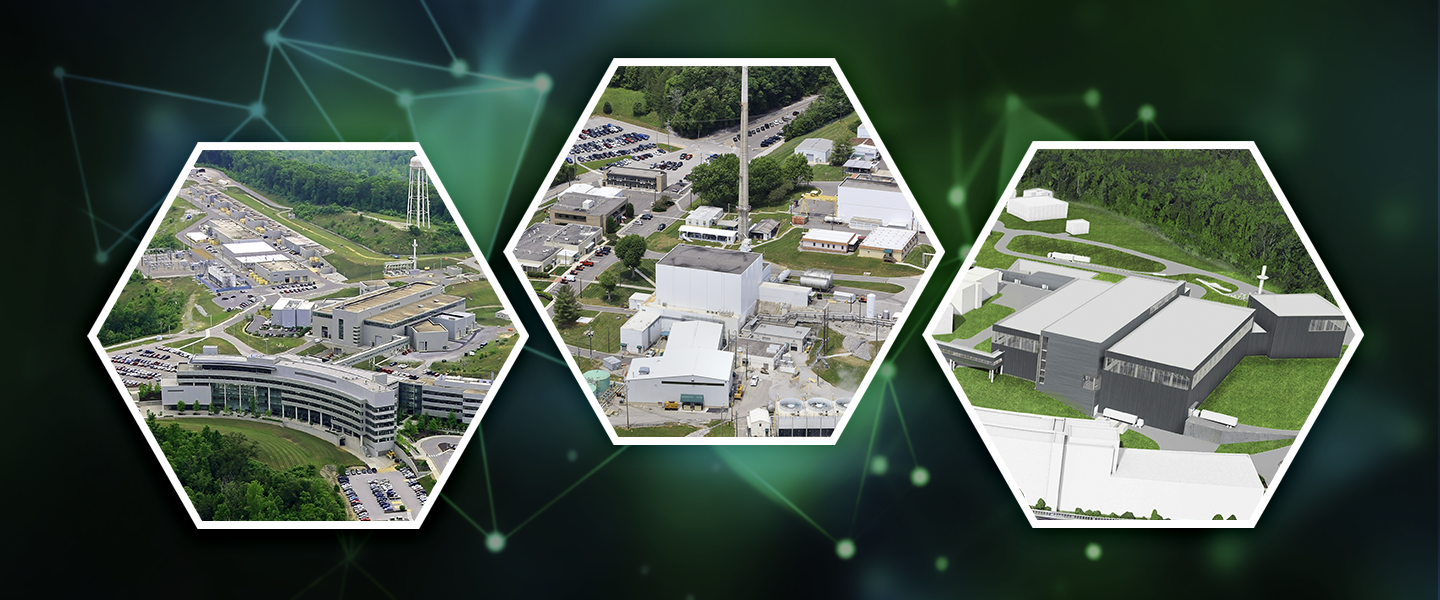Future of Neutron Scattering at Oak Ridge National Laboratory: Three World Leading Neutron Scattering Facilities for Breakthrough Materials Science
The mission of the Oak Ridge National Laboratory (ORNL) Neutron Sciences Directorate (NScD) is to provide researchers with unique and world-leading neutron scattering capabilities for scientific research, aimed at solving the most scientifically important and societally impactful problems in materials and energy research.
Neutron research helps spur innovations and enhance products that improve our daily lives, providing us with more powerful, faster computers, better drugs, longer-lasting batteries, more efficient cars, and improved body armor.
Neutron scattering is an essential technology for advancing materials research because it provides information that cannot be obtained with any other research method. This is because neutrons are magnetically sensitive, nondestructive, and sensitive to lighter elements such as hydrogen. As advanced materials become increasingly important to our economy and national security, neutrons will become even more essential to answering some of our most challenging science questions. ORNL supports this research by operating the Spallation Neutron Source (SNS) and the High Flux Isotope Reactor (HFIR). The SNS is a third-generation source that provides the most intense, pulsed-accelerator-based neutron beams in the world to one target station. HFIR is one of the highest-flux, steady-stream reactor-based sources of neutrons in the world—and the only facility in the United States capable of producing many isotopes vital to medical applications, national security, and space exploration.
These facilities are so important to advancing global knowledge that over 1,200 scientists from around the world visit ORNL each year to examine and quantify the fundamental nature of materials important for physics, biology, chemistry, and engineering.
Science needs, such as the pursuit of carbon neutrality, are constantly evolving, as are technologies. Having world-leading neutron science facilities at the nation’s disposal is an essential element to the science toolkit needed to respond to such a changing landscape. Countries in Europe and China are in the process of designing and building new neutron research facilities to meet growing research demands from industry and the scientific community. The European project is expected to be more powerful than all other neutron sources in operation today, providing new neutron research capabilities not currently available to US scientists and companies.
To ensure that US researchers continue to have access to the best neutron scattering resources well into the future, ORNL is making several upgrades to HFIR and SNS over the coming years. Our four major projects include (1) completion of SNS First Target Station—building out the remaining beamlines with new instruments to provide researchers with new science capabilities; (2) doubling the power available for neutron production via the Proton Power Upgrade Project—speeding up the pace of research, providing scientists more opportunities to carry out their research, making it easier to study smaller and more challenging samples, and providing the power necessary for the construction of the long-planned fourth-generation neutron source at SNS; (3) building a new Second Target Station at SNS, providing 22 beamlines and bringing to fruition a long-planned fourth-generation neutron source at SNS that will provide a world-leading source of cold neutrons; and (4) upgrade and optimization of the cold neutron guide hall and isotope production facilities at HFIR—increasing isotope production for vital materials such as Pu 238, improving the performance of the current instruments, and providing more space to build new instruments.
When completed, ORNL will operate three high-performance, high-throughput neutron research facilities for the scientific community.
The First Target Station (FTS) will remain a world-leading source of pulsed short-wavelength (thermal) neutrons that aid research on energy and quantum materials.
- Hard materials (e.g., superconductors) that make power transmission more efficient, self-healing ceramics, and advanced magnets needed to enable quantum computing.
- Energy-related materials (e.g., hydrogen in fuel cells for cars, lithium ion batteries, thermoelectric materials) that generate energy from changes in temperature.
- Basic physics to help us understand the fundamental nature of materials.
- Simple engineering materials (e.g., steel) that are used to build our homes, schools, offices, and infrastructure.
The Second Target Station (STS) will be a world-leading source of pulsed long-wavelength (cold) neutrons for research into complex materials.
- Soft matter (e.g., polymers, biological materials, complex fluids studied in colloidal science) vital to the development of medications and safer, more effective chemicals for use in everyday products including laundry detergent and paints and environmentally responsive films such as solar panels.
- Magnetism at the mesoscale, which must be better understood to develop quantum computers, improve data storage, and improve the security of digital communications.
- Complex engineering materials such as 3D-printed composites for spacecraft, military, and aerospace applications.
The High Flux Isotope Reactor (HFIR) will remain a high-flux source of continuous cold and thermal neutrons for energy and materials research and a world-leading facility for producing isotopes.
- Offer specialized beamlines and instrumentation that complement SNS capabilities and are used for studies in unique sample environments, quantum materials, energy materials, imaging, and more
- Continue as the only source in the United States of many isotopes vital to medicine (cancer research, radiation therapy, x-ray machines); industry (radiography, neutron sources); national security (nuclear nonproliferation, hazardous material detection); space exploration (Pu-238 to fuel long-range spacecraft and landers); and the discovery of new elements (tennessine).
- Support irradiation research that seeks to understand how radiation affects materials, enabling design of safer nuclear power plants and materials for use in fusion reactors.
- Maintain neutron activation analysis capabilities used in support of nuclear nonproliferation, criminal forensics, and impurity analyses.
- Enable high-energy physics research on neutrinos generated by the reactor.



